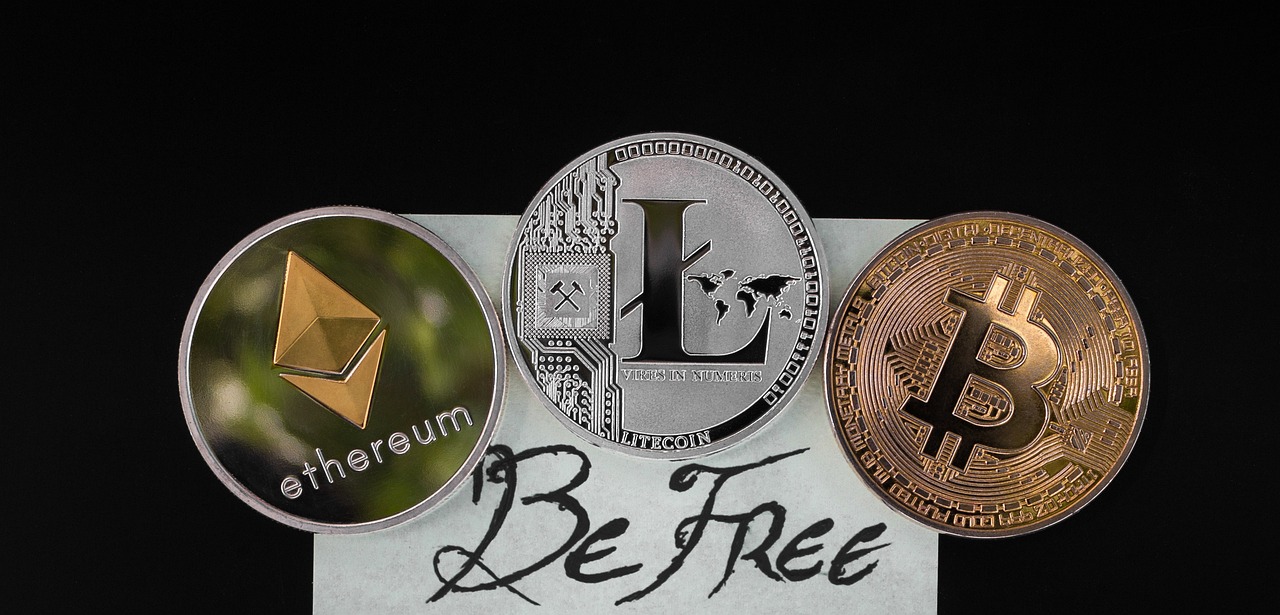The Role of Crypto in Financial Inclusion
In a world where financial systems often leave many behind, cryptocurrencies are stepping in as a beacon of hope. Imagine a scenario where anyone, regardless of their background or location, can access financial services with just a smartphone and an internet connection. This is not just a fantasy; it’s the reality that cryptocurrencies are beginning to create. By breaking down the barriers that have traditionally kept marginalized communities out of the financial loop, crypto is paving the way for a more equitable economic landscape.
Consider this: over 1.7 billion adults worldwide remain unbanked, meaning they lack access to even the most basic financial services. This exclusion can stem from various reasons, including geographical isolation, lack of identification, or simply the high costs associated with traditional banking. Cryptocurrencies, with their inherent decentralization and accessibility, offer a transformative solution for these underserved populations. They allow individuals to engage in financial transactions, save money, and even invest, all without the need for a traditional bank account.
But how exactly does crypto achieve this? The answer lies in its core principles. Unlike conventional banking systems that rely on intermediaries, cryptocurrencies operate on decentralized networks, allowing for direct transactions between users. This means that people can send and receive money without the hefty fees and long wait times that often accompany traditional banking methods. Furthermore, the global nature of cryptocurrencies means that someone in a rural village can transact with someone on the other side of the world as easily as if they were next door. This global reach is not just a convenience; it’s a game-changer for financial inclusion.
Moreover, the introduction of smart contracts—self-executing contracts with the terms of the agreement directly written into code—brings a new level of innovation to financial services. These contracts can automate processes like loan approvals and insurance claims, making them faster, cheaper, and more accessible to those who need them most. Picture a farmer in a remote area who, through a smart contract, can secure a loan based on the future yield of their crops. This is the kind of financial empowerment that cryptocurrencies can unlock.
However, while the potential is enormous, we must also acknowledge the challenges that lie ahead. Regulatory uncertainties, technological barriers, and the volatility of cryptocurrencies pose significant hurdles to widespread adoption. Each country has its own set of regulations that can either facilitate or hinder the growth of crypto-based financial services. Additionally, the digital divide remains a pressing issue; without access to smartphones and reliable internet, many individuals will continue to miss out on the benefits of this financial revolution.
In conclusion, the role of cryptocurrencies in promoting financial inclusion is both promising and complex. As we continue to explore this digital frontier, it’s essential to address the challenges while harnessing the immense potential that crypto holds for creating a more inclusive financial ecosystem. The journey is just beginning, and with it comes the opportunity to transform lives and communities around the globe.
- What is financial inclusion?
Financial inclusion refers to the accessibility of financial services to all individuals, particularly those who are marginalized or underserved by traditional banking systems. - How do cryptocurrencies promote financial inclusion?
Cryptocurrencies provide a decentralized alternative to traditional banking, allowing individuals without bank accounts to participate in the financial system, often with lower fees and greater accessibility. - What are smart contracts?
Smart contracts are self-executing contracts with the terms of the agreement directly written into code, enabling automated transactions without intermediaries. - What challenges does crypto face in promoting financial inclusion?
Challenges include regulatory uncertainties, technological barriers, and the volatility of cryptocurrencies, which can hinder widespread adoption.

Understanding Financial Inclusion
Financial inclusion is a concept that revolves around the idea that everyone, regardless of their socio-economic status, should have access to essential financial services. This includes not just basic banking services but also credit, insurance, and investment opportunities. Imagine living in a world where your financial capabilities are limited not by your potential but by your circumstances. Unfortunately, this is the reality for millions of people across the globe, particularly in marginalized communities.
The importance of financial inclusion cannot be overstated. It empowers individuals to manage their finances effectively, save for the future, and invest in opportunities that can improve their quality of life. However, several barriers prevent many from accessing these vital services. These barriers can be broadly categorized into:
- Geographical Barriers: Many people live in remote areas where banks are few and far between. This lack of physical banking infrastructure makes it challenging for individuals to access financial services.
- Economic Barriers: High fees and minimum balance requirements can deter low-income individuals from using traditional banking services.
- Educational Barriers: A lack of financial literacy can prevent individuals from understanding how to use banking services effectively, leading to a cycle of exclusion.
- Documentary Barriers: Many financial institutions require specific documentation that unbanked individuals may not possess, such as government-issued IDs or proof of address.
These barriers not only limit access to financial services but also perpetuate cycles of poverty and economic inequality. For instance, without access to credit, individuals cannot invest in education or start businesses that could improve their economic standing. This lack of access can create a vicious cycle where the poor remain poor, simply because they cannot tap into the financial resources that could uplift them.
However, the advent of technology, particularly in the realm of cryptocurrencies, offers a glimmer of hope. Digital currencies have the potential to break down these barriers by providing a decentralized alternative to traditional banking. With just a smartphone and internet connection, individuals can access financial services that were previously out of reach. This transformative potential is what makes financial inclusion a crucial topic in today’s economic discussions.
In summary, understanding financial inclusion is about recognizing the obstacles that keep many people from accessing financial services and appreciating the transformative power of technology in overcoming these challenges. As we dive deeper into how cryptocurrencies can enhance accessibility, it's essential to keep in mind the broader implications of financial inclusion for economic equity and social justice.

How Crypto Enhances Accessibility
In a world where traditional banking systems often leave many individuals stranded, cryptocurrencies emerge as a beacon of hope. Imagine a scenario where anyone, regardless of their location or financial status, can access financial services with just a smartphone and an internet connection. This is the promise of cryptocurrencies! By providing a decentralized alternative, crypto allows those without bank accounts to step into the financial arena. No longer do we have to rely solely on brick-and-mortar banks that may not even be within reach for some communities.
One of the most exciting aspects of cryptocurrencies is their ability to democratize access to financial services. Think about it: in many developing countries, a significant portion of the population remains unbanked, often due to geographical barriers or high costs associated with maintaining a bank account. With crypto, these barriers can be dismantled. Anyone with an internet connection can create a digital wallet, enabling them to send and receive money, make purchases, and even invest—all without the need for a traditional bank account.
Furthermore, the decentralization of cryptocurrencies means that individuals have more control over their finances. Unlike traditional banking systems, which are often bogged down by red tape and fees, cryptocurrencies allow for direct transactions between users. This is akin to trading goods in a market without needing a middleman to facilitate the exchange. By eliminating intermediaries, users not only save on costs but also enjoy a more streamlined and efficient transaction process.
Decentralization is the heartbeat of cryptocurrency. It fundamentally changes the way we think about and engage with financial transactions. By removing intermediaries, cryptocurrencies empower users to take charge of their finances. This empowerment is particularly significant for those who have historically been marginalized by the traditional banking system. Imagine a farmer in a remote village who can receive payments directly from buyers without the need for a bank. This not only saves time and money but also fosters a new level of trust and transparency in transactions.
One of the standout features of cryptocurrencies is their ability to offer lower transaction fees compared to traditional banking services. For individuals living on the margins of society, every penny counts. High fees associated with transferring money or maintaining a bank account can be prohibitive. With cryptocurrencies, these costs are significantly reduced, allowing low-income individuals to engage in financial transactions without the fear of incurring exorbitant fees. This accessibility can be life-changing, enabling people to save, invest, and participate in the economy more effectively.
Another remarkable advantage of cryptocurrencies is their global reach. Unlike traditional banks, which may have limited operating hours and geographical restrictions, cryptocurrencies can be accessed from virtually anywhere in the world. This means that individuals in remote areas, where banking services are scarce, can still participate in the global economy. For instance, a small business owner in a rural community can sell products online and receive payments in cryptocurrency, expanding their customer base beyond local borders. This global connectivity fosters economic growth and opens up new opportunities for those who may have previously felt isolated.
Additionally, the introduction of smart contracts revolutionizes how financial services are delivered. These self-executing contracts allow for automated transactions without the need for intermediaries. For underserved populations, this means access to innovative solutions for loans, insurance, and other financial products. Picture a scenario where a farmer can secure a loan based on smart contract technology, ensuring that funds are released only when specific conditions are met. This not only enhances trust but also reduces the risk of fraud, which is often a concern in traditional lending practices.
In conclusion, the role of cryptocurrencies in enhancing accessibility to financial services cannot be overstated. By breaking down barriers and providing a decentralized platform, crypto is paving the way for a more inclusive financial future. As we continue to explore the potential of digital currencies, it's clear that they hold the key to unlocking economic opportunities for millions around the globe.
- What is financial inclusion? Financial inclusion refers to ensuring that individuals and businesses have access to useful and affordable financial products and services that meet their needs.
- How do cryptocurrencies help the unbanked? Cryptocurrencies provide a way for individuals without bank accounts to access financial services through digital wallets and peer-to-peer transactions.
- What are smart contracts? Smart contracts are self-executing contracts with the terms of the agreement directly written into code, allowing for automated and secure financial transactions.
- What challenges does crypto face in promoting financial inclusion? Challenges include regulatory hurdles, volatility, and technological barriers that limit access to cryptocurrencies.

Decentralization and Its Benefits
Decentralization is one of the most revolutionary aspects of cryptocurrencies, fundamentally altering the way we think about financial transactions. Imagine a world where you don’t have to rely on a bank to send or receive money; instead, you can do it directly with another person. This is the essence of decentralization. By removing intermediaries, cryptocurrencies create a peer-to-peer network that empowers users to take control of their own finances. No longer are we at the mercy of banking hours, fees, or policies. The freedom to transact anytime and anywhere is a game-changer, especially for those in underserved communities who have historically been excluded from traditional financial systems.
One of the most significant benefits of decentralization is the reduction of costs associated with financial transactions. Traditional banking systems often impose hefty fees for services like wire transfers or currency exchanges. In contrast, cryptocurrencies typically offer lower transaction fees, allowing individuals to keep more of their hard-earned money. For example, a bank might charge a $30 fee for an international wire transfer, while a cryptocurrency transaction could cost just a few cents. This cost-effectiveness is particularly crucial for low-income individuals who may struggle to afford these fees.
Moreover, decentralization enhances security and privacy. In a centralized system, your financial information is stored in one location, making it a prime target for hackers. However, with cryptocurrencies, your data is distributed across a network, making it significantly harder for malicious actors to compromise it. This added layer of security can instill confidence in users who may have previously been wary of digital financial services.
Another compelling aspect of decentralization is its potential for **financial innovation**. The absence of intermediaries opens the door for creative solutions that can cater to the specific needs of underserved populations. For instance, decentralized finance (DeFi) platforms allow users to lend or borrow money without a traditional bank, often at better rates and with more flexible terms. This can be particularly beneficial for individuals who lack a credit history or collateral, as these platforms often use alternative metrics to assess creditworthiness.
To sum it up, decentralization is not just a technical feature of cryptocurrencies; it is a fundamental shift in how we approach finance. It empowers users, reduces costs, enhances security, and fosters innovation. As we continue to explore the role of cryptocurrencies in promoting financial inclusion, it’s essential to recognize the transformative power of decentralization. It’s like giving everyone a key to the financial door that was once locked tight by traditional banking systems.

Lower Transaction Fees
One of the most compelling advantages of cryptocurrencies is their ability to significantly reduce transaction fees. Traditional banking systems often impose hefty fees for services like wire transfers, international transactions, and even simple account maintenance. In many cases, these fees can act as a barrier, preventing low-income individuals from accessing essential financial services. For instance, a person sending money internationally might pay anywhere from 5% to 10% in fees through traditional means, which can be crippling for someone living paycheck to paycheck.
In contrast, cryptocurrencies typically operate on a decentralized network, which means they can facilitate transactions without the need for intermediaries like banks. This reduction in middlemen directly translates to lower costs. For example, a transaction using Bitcoin or Ethereum may incur a fee of only a few cents to a couple of dollars, depending on network congestion. This is a stark contrast to traditional banking fees and opens up a world of possibilities for those who have been historically excluded from financial services.
Moreover, the transparency of blockchain technology allows users to see exactly how much they are being charged, making it easier to understand and compare costs. This level of visibility is often missing in traditional banking, where fees can be hidden in complex terms and conditions. By simplifying the fee structure, cryptocurrencies empower users to make informed financial decisions.
To illustrate the impact of lower transaction fees, consider the following table that compares average transaction costs between traditional banking and cryptocurrencies:
| Transaction Type | Traditional Banking Fees | Cryptocurrency Fees |
|---|---|---|
| Domestic Transfer | $3 - $10 | $0.01 - $0.50 |
| International Transfer | $30 - $50 | $1 - $5 |
| ATM Withdrawal | $2 - $5 | N/A |
As shown in the table, the cost savings can be substantial, especially for individuals who rely on remittances or other financial services. This affordability can lead to increased participation in the financial system, as people are more likely to engage in transactions that don’t eat away at their limited resources.
In summary, lower transaction fees associated with cryptocurrencies not only make financial services more accessible but also empower individuals to take control of their financial lives. By removing the financial barriers imposed by traditional banking, cryptocurrencies are paving the way for a more inclusive financial future.

Global Reach
The beauty of cryptocurrencies lies in their ability to transcend geographical boundaries. Imagine a world where financial services are not confined to brick-and-mortar banks, but are accessible to anyone with an internet connection. This is the promise of that cryptocurrencies offer. For individuals living in remote areas or developing nations, where traditional banking infrastructure is often sparse or non-existent, digital currencies can be a lifeline. They can facilitate transactions, savings, and investments without the need for a physical bank branch.
Consider the scenario of a farmer in a rural village who wants to sell produce to buyers in a distant city. Traditionally, this farmer might struggle with payment methods, facing delays and high fees from intermediaries. However, with cryptocurrencies, the farmer can receive payments directly, instantly, and at a fraction of the cost. This not only enhances the farmer's income but also fosters economic growth in the community. As more people embrace digital currencies, the potential for local economies to thrive becomes increasingly apparent.
Moreover, the global nature of cryptocurrencies allows individuals to send and receive money across borders without the hefty fees imposed by traditional remittance services. For instance, migrant workers can send money back home to their families with minimal charges, ensuring that more of their hard-earned money reaches those who need it most. According to a World Bank report, remittance costs can be as high as 7% or more, while cryptocurrency transactions often cost less than 1%.
This global accessibility is not just about convenience; it's about empowerment. It gives individuals the autonomy to manage their finances without relying on traditional banking systems that may not cater to their needs. The decentralized nature of cryptocurrencies means that anyone, anywhere can participate in the financial ecosystem, leveling the playing field for the underbanked and unbanked populations around the world.
In conclusion, the global reach of cryptocurrencies is a game changer. It opens doors to financial services for millions who have been excluded from the traditional banking system. As we continue to explore the transformative potential of digital currencies, it’s essential to recognize how they can bridge gaps and create opportunities for economic inclusion on a global scale.
- What is financial inclusion? Financial inclusion refers to the accessibility of financial services to all individuals, especially marginalized communities.
- How do cryptocurrencies enhance accessibility? Cryptocurrencies provide a decentralized alternative to traditional banking, allowing unbanked individuals to participate in the financial system.
- What are smart contracts? Smart contracts are self-executing contracts with the terms of the agreement directly written into code, enabling automated financial transactions.
- What challenges hinder crypto adoption? Regulatory concerns, volatility, and technological barriers are significant challenges to widespread cryptocurrency adoption.

Smart Contracts and Financial Services
Smart contracts are revolutionizing the way financial services operate, particularly for those who have been traditionally underserved. Imagine a world where you can secure a loan or purchase insurance without the need for a middleman, all thanks to the power of blockchain technology. Smart contracts are self-executing contracts with the terms of the agreement directly written into lines of code. This innovation not only streamlines processes but also enhances transparency and trust between parties involved.
One of the most exciting aspects of smart contracts is their ability to automate transactions. For instance, if you were to apply for a loan, a smart contract could automatically verify your identity, assess your creditworthiness, and release the funds without human intervention. This reduces the time it takes to secure financing from days or even weeks to mere minutes. The implications of such efficiency are profound, especially for individuals in remote or underserved areas who may not have easy access to traditional banking services.
Furthermore, smart contracts can significantly lower operational costs. By eliminating the need for intermediaries, such as banks or brokers, individuals can save on fees that would typically eat into their financial resources. This is particularly beneficial for low-income individuals who often find themselves burdened by high transaction costs. With smart contracts, the financial landscape becomes more equitable, allowing everyone to participate in the economy without the fear of exorbitant fees.
To illustrate the potential of smart contracts in financial services, consider the following table:
| Financial Service | Traditional Process | Smart Contract Process |
|---|---|---|
| Loan Approval | Application, Credit Check, Approval, Fund Disbursement | Automated Verification, Instant Approval, Immediate Funds Release |
| Insurance Claims | File Claim, Investigation, Approval, Payment | Automated Claim Assessment, Instant Approval, Immediate Payment |
As you can see, the efficiency gained through smart contracts is staggering. But it’s not just about speed; it’s also about accessibility. In many parts of the world, people lack the documentation required by traditional financial institutions. Smart contracts can operate on alternative data, such as mobile payment histories or social media profiles, allowing individuals to access services that were previously out of reach.
However, it’s crucial to acknowledge that while smart contracts hold immense potential, they are not without their challenges. Issues such as coding errors, security vulnerabilities, and the need for legal recognition in various jurisdictions can hinder their widespread adoption. Nevertheless, as technology continues to evolve and more people become educated about cryptocurrencies and blockchain, the potential for smart contracts to empower underserved populations remains significant.
In conclusion, smart contracts represent a paradigm shift in the financial services sector. By automating processes, reducing costs, and enhancing accessibility, they open the door for a more inclusive financial system. As we move forward, it will be fascinating to see how these innovations unfold and what new opportunities they create for individuals around the globe.
- What are smart contracts? Smart contracts are self-executing contracts with the terms directly written into code, allowing for automated transactions without intermediaries.
- How do smart contracts enhance financial services? They streamline processes, reduce costs, and improve accessibility for underserved populations.
- Are there risks associated with smart contracts? Yes, risks include coding errors, security vulnerabilities, and varying legal recognitions across jurisdictions.

Challenges to Crypto Adoption
Despite the promise and potential of cryptocurrencies to enhance financial inclusion, several significant challenges stand in the way of widespread adoption. These hurdles can be likened to roadblocks on a highway, preventing many from reaching their financial destinations. One of the most pressing issues is regulatory uncertainty. Different countries have varying regulations regarding cryptocurrencies, which can create confusion and hesitation among potential users. For instance, in some regions, cryptocurrencies are embraced and regulated, while in others, they are outright banned or heavily restricted. This inconsistency can deter individuals from engaging with crypto, as they may fear legal repercussions or financial loss.
Another substantial barrier is the volatility associated with many cryptocurrencies. Unlike traditional currencies that are relatively stable, the prices of cryptocurrencies can fluctuate wildly within short periods. This volatility can make it difficult for individuals to trust cryptocurrencies as a reliable means of storing value or conducting transactions. Imagine trying to save for a rainy day, only to find that the money you set aside has lost half its value overnight. Such unpredictability can discourage low-income individuals from investing their hard-earned money into crypto assets.
Additionally, technological barriers present a significant challenge. Access to technology is essential for utilizing cryptocurrencies, yet many underserved populations lack the necessary devices or internet connectivity. For instance, in rural areas where internet coverage is spotty, engaging with blockchain technology can be a daunting task. The digital divide is not just a buzzword; it is a real issue that limits the benefits of crypto for those who could benefit the most. Without access to smartphones or reliable internet, many remain on the sidelines of the digital financial revolution.
To illustrate the impact of these challenges, consider the following table that summarizes the key obstacles to crypto adoption:
| Challenge | Description |
|---|---|
| Regulatory Uncertainty | Varying regulations across countries create confusion and fear among potential users. |
| Volatility | Fluctuating prices make cryptocurrencies unreliable for storing value. |
| Technological Barriers | Lack of access to technology and internet connectivity limits participation. |
In summary, while cryptocurrencies hold great promise for enhancing financial inclusion, these challenges must be addressed to unlock their full potential. Overcoming regulatory hurdles, stabilizing crypto markets, and bridging the digital divide are crucial steps toward ensuring that everyone has the opportunity to benefit from this financial innovation.
- What are the main challenges to cryptocurrency adoption? The main challenges include regulatory uncertainty, price volatility, and technological barriers.
- How can regulatory issues be addressed? Governments can create clear regulations that protect users while promoting innovation in the crypto space.
- Why is volatility a problem for cryptocurrencies? Volatility makes it difficult for people to trust cryptocurrencies as a stable form of money, which is essential for financial inclusion.
- What can be done to overcome technological barriers? Initiatives to improve internet access and provide affordable smartphones can help bridge the digital divide.

Regulatory Concerns
When it comes to the world of cryptocurrencies, one of the biggest hurdles we face is regulatory uncertainty. Imagine trying to navigate a maze without knowing where the walls are; that’s how many people feel when they consider diving into the crypto space. Each country has its own set of rules, and these regulations can vary dramatically. Some nations embrace cryptocurrencies, seeing them as a path to innovation and economic growth, while others impose strict bans, fearing the potential for fraud and money laundering. This inconsistency creates a complex landscape for individuals looking to access crypto-based financial services.
The impact of these regulatory concerns is significant. For instance, in countries where regulations are lax, we often see a surge in crypto adoption. In contrast, in regions with strict regulations, potential users may feel discouraged or even criminalized for exploring these financial avenues. This duality raises a critical question: how can we ensure that regulations foster innovation while also protecting consumers?
Furthermore, the rapid evolution of technology often outpaces regulatory frameworks. Policymakers are racing to catch up, but their efforts can sometimes lead to hasty decisions that stifle growth rather than promote it. For example, consider how regulations might affect the development of decentralized finance (DeFi) platforms, which rely on smart contracts to facilitate transactions without intermediaries. If regulations are too restrictive, they could inhibit the benefits that these technologies could provide to underserved populations.
To illustrate the varying regulatory landscapes, let's take a look at the following table that compares the approaches of different countries towards cryptocurrency regulation:
| Country | Regulatory Approach | Impact on Adoption |
|---|---|---|
| United States | Mixed regulations; some states embrace crypto, others impose restrictions | High adoption in some states, but confusion in others |
| China | Strict bans on trading and ICOs | Low adoption; users turn to decentralized options |
| El Salvador | Proactive; first country to adopt Bitcoin as legal tender | High adoption; a model for financial inclusion |
| European Union | Developing comprehensive regulations | Moderate adoption; potential for growth as clarity improves |
As we can see, the regulatory environment plays a crucial role in shaping the adoption of cryptocurrencies. It’s not just about what the laws say, but also about how they are interpreted and enforced. Individuals in regions with supportive regulations may find it easier to access crypto services, while those in restrictive environments may face significant barriers.
In conclusion, while the potential for cryptocurrencies to enhance financial inclusion is immense, overcoming regulatory concerns is essential for unlocking that potential. Until a more unified and supportive regulatory framework is established globally, many will continue to face challenges in accessing these revolutionary financial tools. It’s a delicate balance between fostering innovation and ensuring security, and the future of crypto adoption will largely depend on how this balance is achieved.
- What are the main regulatory challenges facing cryptocurrencies?
The main challenges include inconsistent regulations across countries, concerns about fraud and money laundering, and the rapid pace of technological advancements that often outstrip existing regulations.
- How do regulations impact cryptocurrency adoption?
Countries with supportive regulations tend to see higher adoption rates, while those with strict regulations may deter potential users from exploring cryptocurrencies.
- What can be done to improve the regulatory landscape for cryptocurrencies?
Establishing clearer, more consistent regulations that promote innovation while protecting consumers is crucial. Collaboration between regulators and industry stakeholders can help achieve this balance.

Technological Barriers
The rise of cryptocurrencies has opened up a world of possibilities for financial inclusion, but it’s not all sunshine and rainbows. One of the most significant hurdles that stands in the way of this digital revolution is . Imagine trying to ride a bike without wheels; that's what it feels like for many individuals who lack access to the necessary technology. To fully harness the power of cryptocurrencies, one must have access to the internet and a device capable of managing digital wallets. Unfortunately, this is not a reality for everyone.
In many developing regions, the infrastructure required for accessing the internet is still in its infancy. According to a recent report, around 3.7 billion people worldwide still lack internet access. This digital divide creates a significant gap, leaving many individuals unable to participate in the cryptocurrency ecosystem. Without internet connectivity, the ability to send, receive, or trade cryptocurrencies becomes virtually impossible, effectively locking these individuals out of the financial system.
Furthermore, even when internet access is available, the cost of smartphones and computers can be prohibitive. Many low-income families prioritize basic needs such as food and shelter over technology, which means that investing in a smartphone or a reliable internet connection is often not feasible. In fact, a study by the International Telecommunication Union indicated that over 40% of households in developing countries cannot afford internet access. This financial strain creates a vicious cycle, where the lack of access to technology leads to further economic exclusion.
Moreover, even when individuals do have the necessary devices, they may not possess the knowledge or skills to navigate the complexities of cryptocurrencies. The learning curve can be steep, and many potential users may feel overwhelmed by the technical jargon associated with blockchain technology. This situation is akin to trying to assemble a complicated piece of furniture without instructions—frustrating and often leading to failure. Educational initiatives are crucial to bridge this gap, empowering individuals with the knowledge they need to use cryptocurrencies effectively.
To summarize, while cryptocurrencies offer a promising pathway toward financial inclusion, pose significant challenges that must be addressed. The lack of internet access, high costs of technology, and insufficient digital literacy create a perfect storm that can prevent many from benefiting from the advantages that digital currencies can provide. Bridging this gap will require concerted efforts from governments, NGOs, and the private sector to ensure that technology is accessible and affordable for everyone.
- What are the main technological barriers to cryptocurrency adoption?
The main barriers include lack of internet access, high costs of devices, and insufficient digital literacy among potential users. - How can we improve access to technology for underserved populations?
Initiatives could include providing affordable internet access, subsidizing devices, and implementing educational programs to enhance digital literacy. - Are there any solutions being implemented to overcome these barriers?
Yes, various organizations are working on projects to provide low-cost internet access and training programs to help individuals learn about cryptocurrencies.
Frequently Asked Questions
- What is financial inclusion?
Financial inclusion means ensuring that everyone, especially those in marginalized communities, has access to essential financial services. It’s about breaking down barriers that keep people from participating in the financial system.
- How do cryptocurrencies improve financial accessibility?
Cryptocurrencies offer a decentralized alternative to traditional banking, allowing individuals without bank accounts to engage in financial activities. This means that even if you live in a remote area, as long as you have internet access, you can use crypto for transactions.
- What are the benefits of decentralization in crypto?
Decentralization removes the need for intermediaries, which can empower users by allowing direct transactions. This not only enhances user autonomy but also significantly reduces the costs typically associated with traditional banking.
- Are transaction fees with cryptocurrencies lower?
Yes, cryptocurrencies often come with lower transaction fees compared to traditional banking services. This is particularly beneficial for low-income individuals, making it easier for them to send and receive money without incurring hefty charges.
- Can cryptocurrencies be used globally?
Absolutely! As long as you have an internet connection, cryptocurrencies can be accessed from anywhere in the world. This global reach is crucial for providing financial services to those in underserved regions.
- What are smart contracts?
Smart contracts are self-executing contracts with the terms of the agreement directly written into code. They enable automated financial transactions without needing intermediaries, offering innovative solutions for loans, insurance, and more.
- What challenges does crypto face in achieving widespread adoption?
There are several challenges, including regulatory hurdles, volatility in cryptocurrency values, and technological barriers. These factors can hinder individuals' ability to access and utilize crypto-based financial services effectively.
- How do regulatory concerns impact crypto adoption?
Regulatory uncertainty can create obstacles for cryptocurrency users. Different countries have varying regulations, which can affect how easily individuals can access crypto services and participate in the financial system.
- What technological barriers exist for using cryptocurrencies?
Access to technology is essential for utilizing cryptocurrencies. The digital divide means that many people lack access to smartphones or the internet, which limits their ability to benefit from crypto solutions for financial inclusion.



















